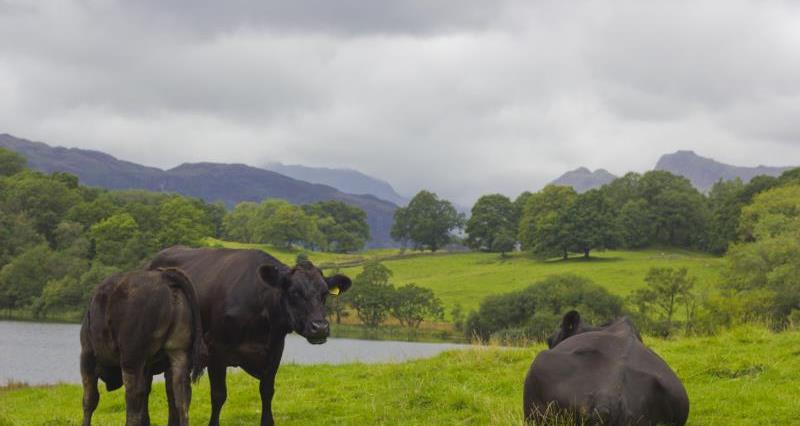There is often news coverage about the huge amount of water supposedly needed for cattle production or used to make a burger. Are these figures correct? The real answer is ‘sort of, but…’ because it’s complicated, but this doesn't make the headlines. Subtleties like where and how beef is produced and the sources of water have been missing from the debate, together with any mention of the multiple benefits livestock production provides for society.
Calculating water footprints
Everything we use, wear, buy, sell and eat takes water to make. And by calculating a water footprint, it is possible to estimate the amount of water used to do anything – whether it’s running a business or producing a burger.
Not all water is equal, and it shouldn't be treated as such in a calculation. The types of water include:
Green – rainwater used
Blue - ‘tapwater’ (water used from surface and groundwater)
Grey – freshwater used to dilute pollution
Another consideration is how far back or up the chain of production you go to estimate water use. For beef, some estimates only consider drinking water for cattle, whereas others might include the water needed to grow the food that the animal eats.
Add in the range of farming systems across the world and it’s easy to see how the amount and type of water needed to grow different foods can vary a huge amount.
The Water Footprint Network has calculated that on average one kilogram of beef needs about 15 thousand litres of water, 4% of that used is blue, and most of the total volume of water (98%) refers to the water footprint of the feed for the animals. The AHDB Beef and Sheep Roadmap estimated that in England, it takes over 17 thousand litres to produce a kilo of beef but only 0.4% of that is blue water.
However, just estimating the amount of water used is only part of the story. The impact it has depends on where the water is taken from and when, for example, if it comes from a place where water is already scarce.
There’s a reason that our ruminant livestock are concentrated in the west and north of the UK, where our maritime climate give us the potential to grow great grass with abundant green water, rather than using (blue) water taken out of the tap that could be used for other purposes.
And there are different ways of expressing the amount of water used relative to what we’re looking for in food. So whilst a kilo of plant protein needs a lot less water to produce than a kilo of beef, a gram of nut protein requires more water than a gram of beef protein.
|
|
Litre per kilogram |
Litre per kilocalorie |
Litre per gram of protein |
Litre per gram of fat |
|
Pulses |
4055 |
1.19 |
19 |
180 |
|
Nuts |
9063 |
3.63 |
139 |
47 |
|
Beef |
15,415 |
10.19 |
112 |
153 |
